Enhancing Slope Stabilization at the Left Bank of Xiluodu Hydropower Station with Self-Drilling Anchor Bolts
Time:2024-10-18View:
Introduction
Slope stabilization in challenging geological conditions is a critical concern for civil engineers and geotechnical experts, especially when undertaking massive infrastructure projects like the Xiluodu Hydropower Station. Situated on the Jinsha River, this hydropower station ranks among the largest in China. The Left Bank of the project, characterized by complex geological formations and a pressing construction timeline, presented an engineering challenge that demanded innovative solutions. In response, self-drilling anchor bolts emerged as an effective and efficient method to address the site's stability issues.
This article explores how self-drilling anchor bolts were used to enhance slope stabilization at the Left Bank of Xiluodu Hydropower Station, with a focus on the project's geological challenges, the role of these anchor bolts, and the results of their application.
Geological Complexity Unveiled
At the core of the stabilization challenge at the Left Bank lies the site's geological complexity. Engineers were tasked with managing a range of stratifications that significantly influenced the approach to excavation and slope stabilization. Understanding these stratifications was essential in selecting the appropriate stabilization techniques.
1. Diluvial Deposit (plQ3)
The uppermost layer at the site was a diluvial deposit consisting of poorly consolidated material. The uneven structure of this layer made it prone to collapse during excavation, particularly when subjected to stress from adjacent construction activities. These conditions demanded a solution that could maintain the stability of the slope while allowing for excavation without endangering workers or equipment.
2. Glacier Deposit (fgl+glQ2)
Beneath the diluvial layer lay a glacier deposit, which further complicated construction efforts. This layer exhibited poor autostability, meaning it had little inherent strength to maintain its structure when disturbed. As the engineers delved deeper into this stratification, traditional excavation and support methods became increasingly inadequate.
3. Ancient Landslide Deposit
The deepest geological layer consisted of an ancient landslide deposit, primarily composed of Triassic system amaranth sandstone and limestone macadam. This deposit further increased the project's difficulty due to its heterogeneous nature and the presence of weathered rock materials that could compromise the stability of the slope.
Project Overview
The stabilization project at the Left Bank of Xiluodu Hydropower Station involved constructing two critical vertical outlet shafts, each with unique geological conditions and structural requirements.
1. NO.1 Shaft
- Depth: 251 meters
- Covering stratification: Extended to a depth of 115 meters
- Excavation diameter: 14.0 to 14.6 meters
- Challenges: The weak surrounding rock required additional support between depths of 3.0 to 4.5 meters.
To reinforce the slope in this shaft, self-drilling anchor bolts were used extensively. Each bolt measured 6 meters in length and was installed at intervals of 1.2 meters by 1.0 meter, with a drilling depth of 5.5 meters. This allowed for the secure stabilization of the shaft as excavation progressed deeper.
### 2. NO.2 Shaft
- Depth: 251 meters
- Covering stratification: Extended to a depth of 126 meters
- Excavation diameter: Similar to NO.1 Shaft
The geological conditions and excavation demands for the NO.2 Shaft closely mirrored those of the NO.1 Shaft. Accordingly, the same self-drilling anchor bolt configuration was used, ensuring that the rock mass remained stable throughout the excavation process.
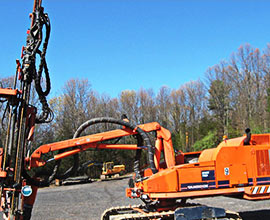
The Remarkable Role of Self-Drilling Anchor Bolts
The self-drilling anchor bolts provided a technological leap over traditional methods of slope stabilization. The decision to employ these bolts at the Left Bank of the Xiluodu Hydropower Station was driven by their ability to address the complex geological challenges efficiently and effectively.
1. Simultaneous Drilling, Grouting, and Anchoring
One of the most significant advantages of self-drilling anchor bolts is their ability to perform multiple functions simultaneously. Unlike traditional methods that require separate drilling, grouting, and anchoring steps, self-drilling anchor bolts combine these operations in a single process. This not only sped up the construction timeline but also minimized the risk of failure during excavation by allowing for continuous support.
2. Hollow Bore for Flushing
The hollow bore of self-drilling anchor bolts allows for the effective flushing of sediment and debris during the drilling process. In geological conditions like those encountered at the Left Bank, where loose materials and weak rock are prevalent, this feature is particularly valuable. The ability to flush out obstructions ensures that the anchor bolt can penetrate deep into the rock mass, providing a secure anchor point.
3. Adaptability to Weak Rock and Unconsolidated Ground
Self-drilling anchor bolts are highly adaptable to various geological conditions. Their ability to be cut to size or extended with couplers makes them ideal for use in tight spaces or areas with restricted access. Furthermore, they perform exceptionally well in weak rock, loose soil, weathered layers, or strata containing a mixture of sand and stone—precisely the conditions encountered at the Left Bank.
Compared to traditional casing drilling methods, self-drilling anchor bolts offer superior efficiency and cost savings. The all-in-one design and ease of installation reduced the overall construction time and mitigated the need for specialized equipment.
4. Enhanced Safety
Safety is always a top priority in slope stabilization, particularly when dealing with unstable geological formations. The use of self-drilling anchor bolts allowed for a continuous reinforcement mechanism, ensuring that deformations in the rock mass were immediately counteracted by the bolts. By transmitting deformation forces from the rock to the anchor bars through reinforced plates and nuts, the self-drilling system provided an added layer of security, reducing the risk of slope failure.
Results and Conclusion
The application of self-drilling anchor bolts at the Left Bank of Xiluodu Hydropower Station proved to be highly successful. Despite the project's complex geological conditions, the use of these innovative bolts allowed for the safe and timely completion of the slope stabilization works. By integrating drilling, grouting, and anchoring into one streamlined process, self-drilling anchor bolts provided a robust solution that met the project's stringent safety and performance standards.
In conclusion, the Xiluodu Hydropower Station project serves as a model for the effective use of self-drilling anchor bolts in slope stabilization. Their versatility, efficiency, and safety advantages make them an ideal choice for tackling difficult geological conditions. As the demand for large-scale infrastructure projects grows, self-drilling anchor bolts will likely continue to play a crucial role in geotechnical engineering.
For more information, please contact us at Sinorock (sinorock@sinorockco.com).
latest cases
-
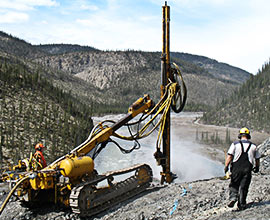
- The Application of Self Drilling Anchor Bolt at the Tala Hydro Project for Tunneling in Poor Rock Mass Conditions
- Time:2024-07-30From:This Site
- The Tala hydroelectric project is located in Chukha Dzongkhag in western Bhutan. The dam site is in the Thimphu gneiss, and the section of HRT up to 14km downstream from C-1 is in gneiss with quartzite bands and biotite schists. There are joint sets, and the rock is highly faulted, with foliation shears of varying thickness up to 30cm. From 14km to 23km, the rock type is biotite gneiss with bands of quartzite, mica schist, and sericite-schist with amphibolite. Rock conditions merit 3 - 4 on the NGI Q system, with pretty poor conditions affecting parts of C2, C-3 and all of C-4. The rock format
- View details
-
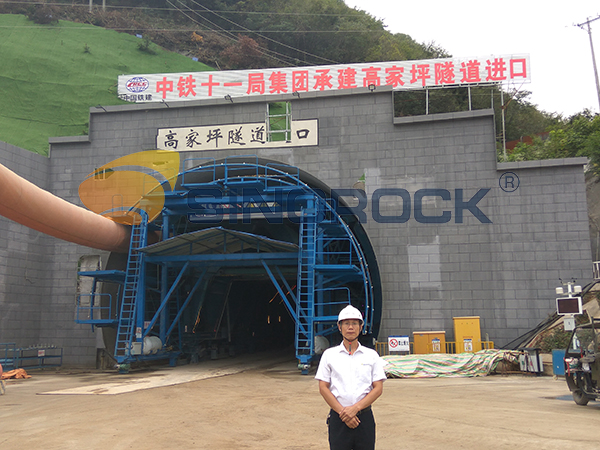
- Pre-support with Pipe Umbrella System for Gaojiaping Tunnel
- Time:2022-08-04From:This Site
- The success of the Gaojiaping Tunnel's construction demonstrates the ingenuity of Sinorock's self-drilling anchor system. It not only overcame the geological challenges but also enhanced safety and efficiency in tunnel construction. As China's infrastructure projects continue to push boundaries, Sinorock's commitment to professionalism and reliable products ensures a safer and more efficient future.
- View details
-

- The Construction Method of Self Drilling Anchor Bolt in Sandy Gravel Deep Excavation
- Time:2015-10-22From:This Site
- With the exploitation of the underground space in cities and the large scale construction of the underground retail spaces, the deep excavation projects is becoming more and more.
- View details
-
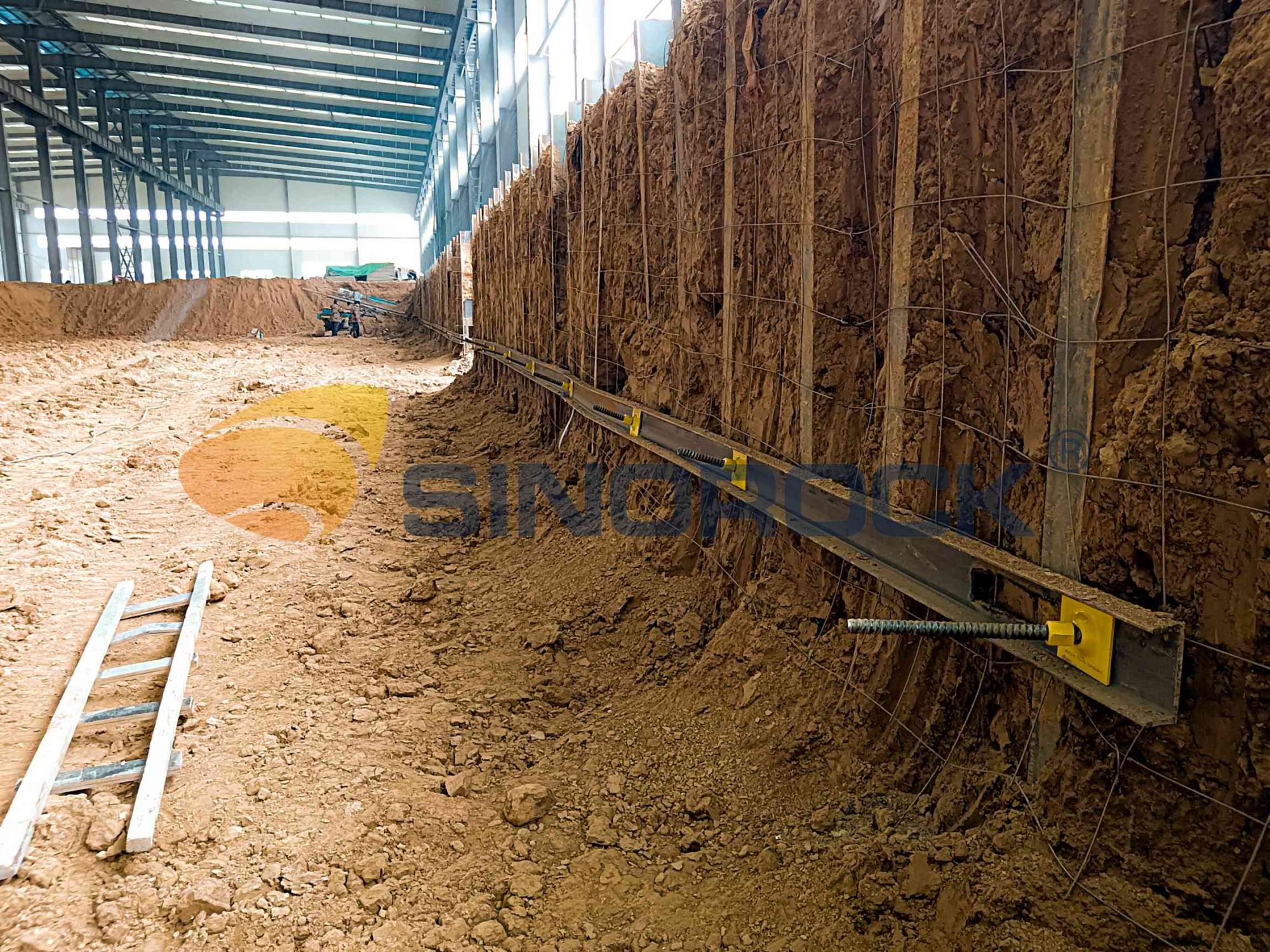
- Foundation Support for Hongji Group's High-end Packaging Materials Project
- Time:2023-10-20From:This Site
- Hongji Group's High-end Packaging Materials Project in Linqing City, Shandong Province, serves as a vivid example of how Sinorock's representative R32 self-drilling hollow helical anchor bolts played an instrumental role in supporting the foundation of a high-stakes industrial endeavor.
- View details
-
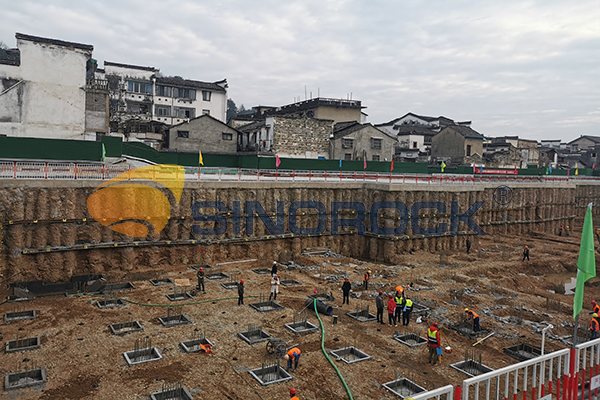
- Binjiang West Road Pedestrian Mall Project
- Time:2022-07-15From:This Site
- The project requires a shorter construction period and lower cost. After multiple rounds of plan review, the project party finally decided to adopt a self-drilling anchor system, using simultaneous drilling and grouting construction processes.
- View details
-
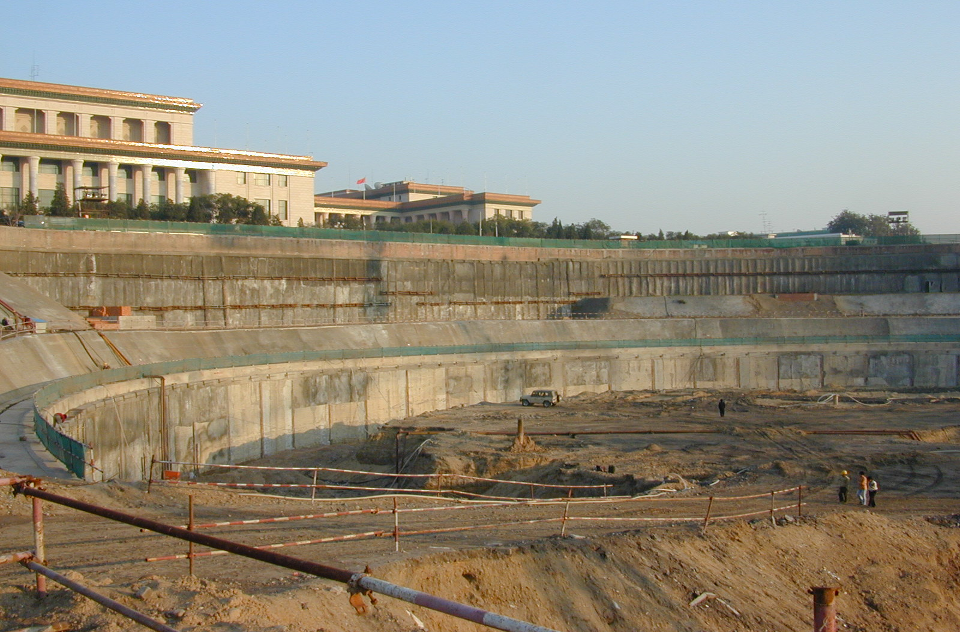
- The Application of Self Drilling Anchor Bolt in Beijing Oriental Plaza Foundation Support Project
- Time:2015-08-20From:This Site
- In the realm of modern construction and engineering, the utilization of cutting-edge technologies and innovative methodologies is paramount to overcoming the challenges posed by complex geological conditions and formidable project scopes. A prime testament to this is the remarkable application of a self-drilling anchor system in the monumental Beijing Oriental Plaza Foundation Support Project.
- View details
-

- Enhancing Slope Stabilization at the Left Bank of Xiluodu Hydropower Station with Self-Drilling Anchor Bolts
- Time:2024-10-18From:This Site
- Slope stabilization in challenging geological conditions has always been a daunting task for engineers and construction experts. In the case of the Left Bank of Xiluodu Hydropower Station, where complex geological stratifications and a short construction period posed significant challenges, the innovative application of self-drilling anchor bolts emerged as a game-changer.
- View details
-
.jpg)
- Xingyi Normal University for Nationalities Retaining Wall Reinforcement
- Time:2023-09-21From:This Site
- The Xingyi Normal University for Nationalities Retaining Wall Reinforcement project stands as a testament to the capabilities and effectiveness of Sinorock's self-drilling anchor system in addressing even the most challenging slope stabilization tasks.
- View details
-
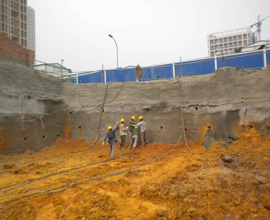
- The Slope Support Project of Dong Miao Residential Area in Ji Nan
- Time:2015-10-30From:This Site
- In the ever-growing urban landscape, the challenge of stabilizing slopes and ensuring the safety of residents is of paramount importance. The success story of the Slope Support Project in the Dong Miao Residential Area, situated in the heart of Ji Nan, serves as a beacon of innovation and engineering excellence. The application of the cutting-edge Self-Drilling Anchor Bolt System has not only ensured the stability of the slopes but has also set a new standard in slope stabilization.
- View details
 Download
Download 


